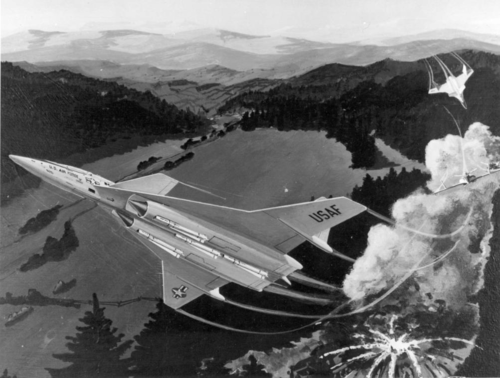Perhaps on the Air Force side, but the F-18 wound up costing about as much as an F-14.
Finishing development of the F401 and developing the avionics for the F-14C would have resulted in way more capability than the F-18. The F-14C would have replaced the A-7 in Navy service, and likely the F-4 in the Marines, with the F-14B doing the fleet air defense role the A did, only with much better range and performance. I think the Navy would have been better off without the LWF.
The only place I the F-18 was more useful was on the Midways, and even then Phantoms with Boeing's conformal weapons carriage pack could have done the job until Coral Sea and Midway retired.
Frack. The Hornet wound up as expensive as a Tomcat ? never realized this before.
And a multirole F-14 could have replaced the A-7 but also the A-6. Plus the Marines. Ain't that bird a little big and expensive for all this ? but since I've just learned that the Hornet as as expensive, my argument is moot...
The only place I the F-18 was more useful was on the Midways, and even then Phantoms with Boeing's conformal weapons carriage pack could have done the job until Coral Sea and Midway retired. Speaking of which, the Air Force could have used them on their F-4s as well for the strike-fighter role the F-16 wound up doing. Until something eventually comes along to take over. Like perhaps a Grumman/IAI F-16? Lavi*. That would be interesting. Not that the AF would want them, since it wouldn't be an AF design.
Maybe the Navy would have got the VFAX it wanted instead of being forced to take the LWF leftovers. I'd suggest Model 263.
Or maybe tweak that a little differently... since the Tomcat would be pretty expensive for the Marines, how about the Convair 200 / 201 VSTOL in place of the F-18 for both USMC and USN ? hence as a successor to the A-7 for USN ? with the advantage (over the F-18, for USMC) it is VSTOL like the Harrier and much less expensive than the Tomcat (for USN).
It would be kind of pre-F35 decades in advance and without USAF... and without stealth. Even with a lift jet stuck into it, it might be a little less compromised than a F-35 and a better aircraft in range, speed, bombload...
F-14B multirole Tomcat
for
- fleet defense
- A-6 replacement later on (although A-6F rocked, shame it was never build).
Convair 200 VSTOL and non-VSTOL 201
for
- A-7 replacement on USN decks (F-18)
- F-4 Phantom replacement on Midways
- F-8 Crusader replacement on the very last Essex (one can dream, no ?)
- USMC supersonic air defense > from USN carriers ( F-18)
- USMC air defence > from amphibs (Harrier II with AMRAAM, F-35)
- Sea Control Ships, obviously (Zumwalt USN, plus Spain, Italy, perhaps GB...)




